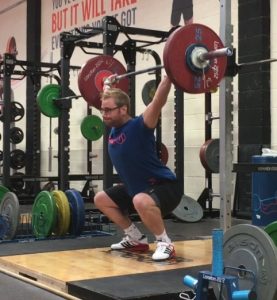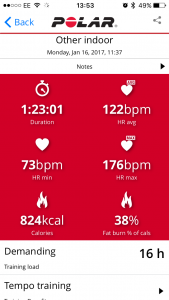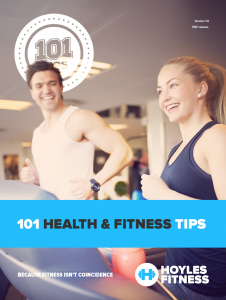Weight Lifting for Weight Loss – Sample Workouts
Weight Lifting for Weight Loss
In this article we are going to explore weight lifting for weight loss – how we can adapt weight lifting exercises and build a workout designed for weight loss, using weight lifting exercises and principles.
At the bottom of the article I have put together a couple of sample weight lifting for weight loss workouts that you can do yourselves.
When you looking at weight lifting movements, they tick so many training boxes, yet they are massively under-utilised. Perhaps because of their complex nature and requirements for specific equipment, but with the rise of weight lifting as a sport and the proliferation of CrossFit gyms with weight lifting kit, it’s more accessible.
My thinking around using weight lifting for weight loss is those who can, should.
Weight Lifting and Compound Movements
Weight training 101 dictates that workouts should be based mostly around big, multi-joint exercises known as compound movements. There are lots of reasons for this, most of which will be mentioned below.
All of the movements involved in weight lifting are compound by their nature. There are no isolation exercises in weight lifting, making it a naturally efficient way to train.
Weight lifting exercises burn a huge amount of calories – I wear a heart rate monitor for my sessions so know exactly how many calories I’m burning per session. Armed with this data, I can make adjustments to my diet so I can decrease, maintain or even increase my body weight.
Here is an example of my heart rate and calorie data from my heart rate monitor…
Weight lifting for weight loss seems a contradiction in terms. When we think of weight, we think of increased size and mass, not reducing in weight and size.
With this in mind, we have to explore what weight lifting actually is. We need to separate the competitive sport of weight lifting from the training methods using weight lifting exercises.
Beyond competition, weight lifting is nothing more than an incredibly efficient way of exercising. As a training system, weight lifting….
- Is incredibly demanding on the cardiovascular system
- Builds muscle
- Builds strength
- Creates huge calorie burn
- Prevents injury
- Trains all of the body
That’s pretty much everything you require in a training system, so lets explore how you can use weight lifting for weight loss.
Programming Weight Lifting for Weight Loss
Playing with the variables of intensity and volume, you can build a training plan that involves the major olympic lifts but delivers massive calorie burn to help towards weight loss.
The first consideration is the nature of the lifting. Weight lifting exercises use A LOT of muscle, hence the massive demand they place on the body. It also explains the massive calorie burn from the movements.
With this in mind, we have to keep the number of different exercises to a minimum – we don’t want to overload the central nervous system, nor do we want to over-fatigue the lifter leading to a drop in form which is potentially dangerous.
The consideration then is, how can you add sufficient volume to the workouts if your exercise selection is limited? There are two ways really…
- Simply add more sets.
- Perform weight lifting complexes.
Adding more sets is an obvious one. More sets = more volume. This works, it’s effective but it could be quite boring and lead to a lack of adherence to the programme. Lifting heavy weight for multiple, low-rep sets is also a way to ensure central nervous fatigue pretty quickly!
The second way is by performing complexes. In this case, complexes are exercises where two or more exercises are paired together. To perform weight lifting complexes well, you have to reduce the weight you lift and perform more reps.
You’ll still benefit from a large training effect, high calorie burn and plenty of movement, but you’ll recovery quicker.
So which do you go for?
I’d suggest a mixture of the two. The weight lifting for weight loss workouts would be relatively short (45-50 minutes), high intensity and technical in their nature.
With a session containing only 3 main exercises each, you can burn a lot of calories, improve your conditioning, practice your weight lifting technique and add muscle to your frame.
Weight Lifting for Weight Loss Workout 1
With this workout, aim for 5 sets of 5 reps – this will mean you’ll be using a weight that is challenging, but you can cope with for the full 5 reps and sets. It’s really important in weight lifting to remember your form.
Warm up: 500m row.
Ease into each lift with a very light weight set of it, both to practice the movement pattern and to get used to the different exercises in the complex. This DOESN’T count as a set – it’s a warm up you should do before each exercise.
Keep rest periods to no longer than 90 seconds between sets. The key here is the intensity of the session. You want to keep your heart rate up throughout.
- Snatch Pulls: 5 x 5
- Barbell Snatch into Overhead Squat: 1 Snatch, 5 Overhead Squats
- Cleans into Front Squats: 1 Clean, 5 Squats
Weight Lifting for Weight Loss Workout 2
Workout 2 contains slightly lighter loads (with the exception of the Snatch Grip Deadlifts), so I suggest more reps per exercise. In this case, I’d look to drop the weight in the Deadlifts to a weight you could cope with for 8 reps and use that as your working weight.
Warm up: 500m row.
Ease into each lift with a very light weight set of it, both to practice the movement pattern and to get used to the different exercises in the complex. This DOESN’T count as a set – it’s a warm up you should do before each exercise.
The clean and press and clean and jerk are very complex movements, so keep the weight on the medium end of the medium-heavy scale and go from there. You can always go heavier if you need to.
Keep the rest periods no longer than 2 minutes.
- Clean and Press: 5 x 5
- Snatch Grip Deadlifts: 5 x 8
- Clean and Jerk: 5 x 3
My advice would be for you alternate these workouts twice per week, with a general all-body resistance training session in the middle. Your training week could look like…
- Monday: Weight Lifting for Weight Loss Workout 1
- Wednesday: All body weight training session.
- Friday: Weight Lifting for Weight Loss Workout 2
Weight Lifting for Weight Loss Coaching Thoughts
Weight lifting is a series of high-skill, complex movements. They may look easy, but they’re tough – both physically and technically. For this reason, only attempt these workouts if you are a competent weight lifter or you have a coach with you.
There are plenty of excellent resources to help you with your weight lifting technique, such as Greg Everett’s Complete Guide to Olympic Weightlifting.
It’s also a good idea to equip yourself properly. As you can see in the videos, I wear Adidas Power Perfect 2’s to lift in. They are stable, supportive and some of the best value weight lifting shoes on the market.
Finally, a good pair of wrist wraps can help prevent wrist pain and provide additional support. For a very small investment you can avoid a lot of pain! Here are the wrist wraps I use.
If you want a new fitness challenge then weight lifting is the obvious way to progress your fitness and abilities in the gym. As I’ve highlighted with this article, weight lifting for weight loss is possible and a fantastic fitness challenge to those who are willing and able to take it on!


